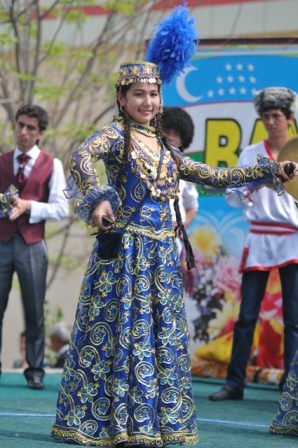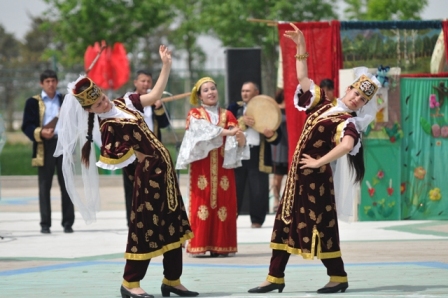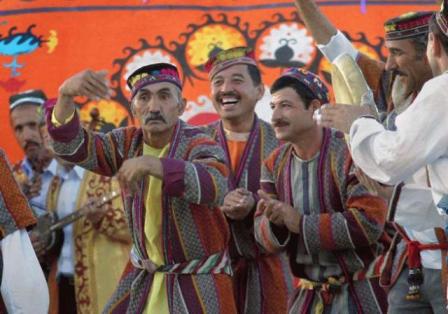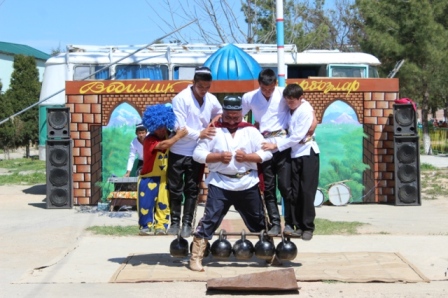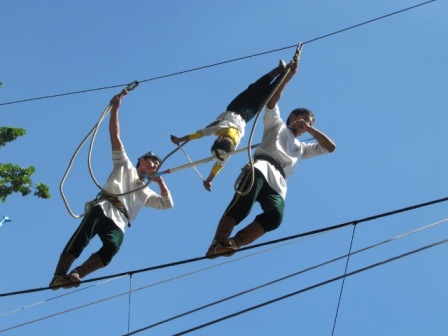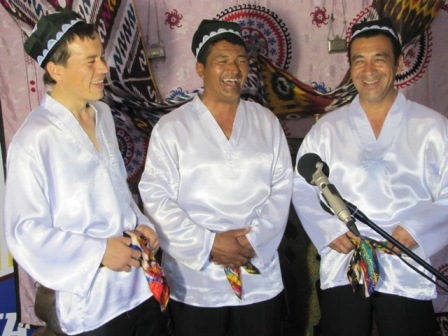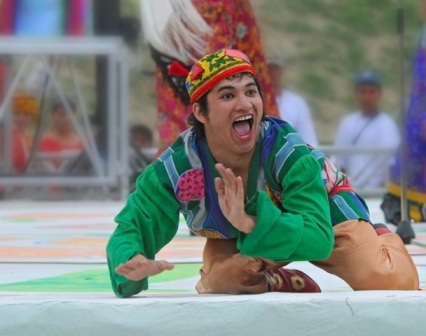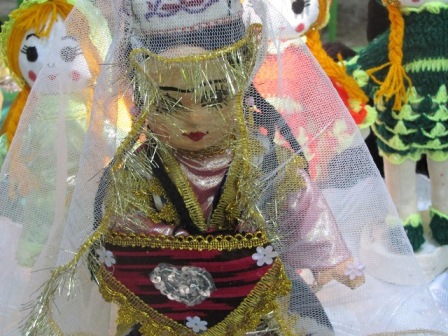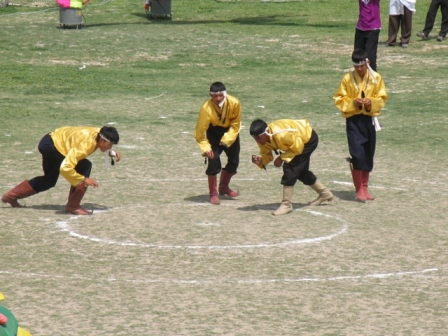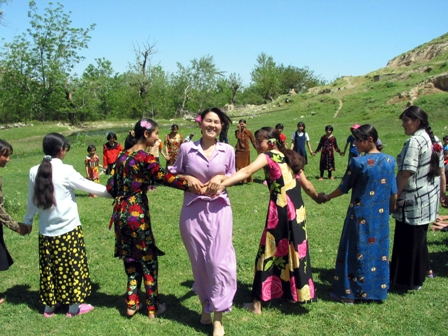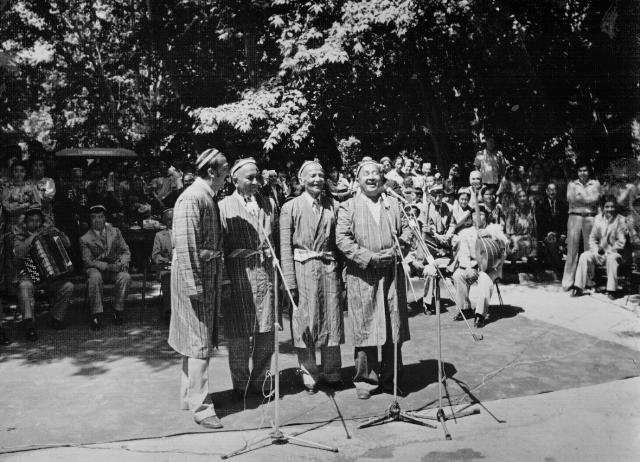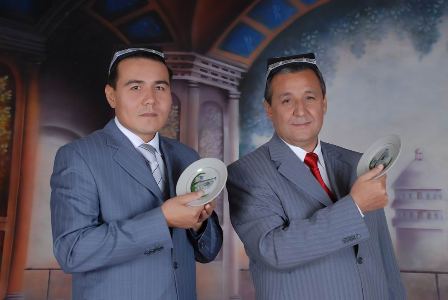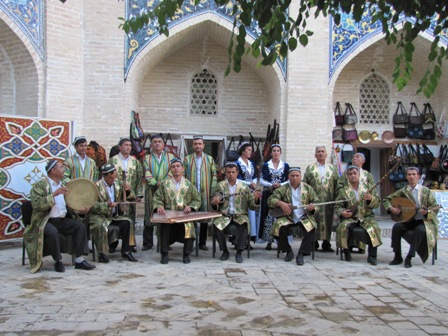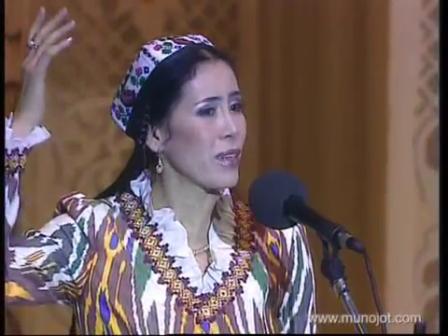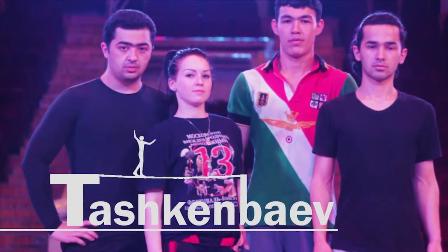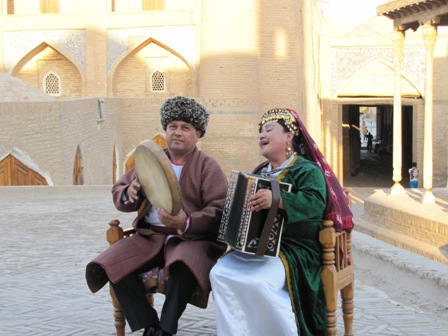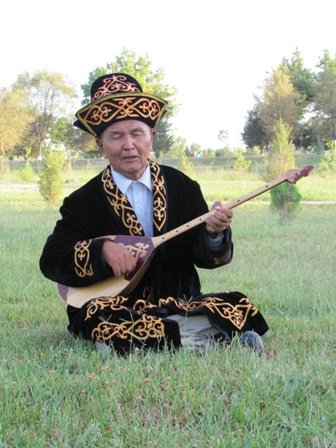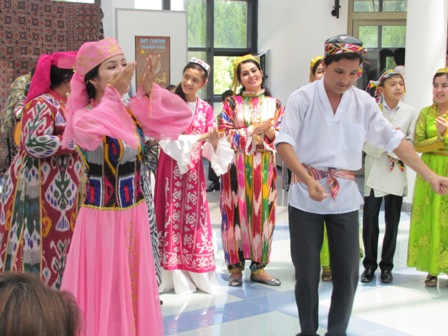|
Domain: Performing Arts
Khoresm dancing school emerged already in antiquity, and has evolved for centuries in Khoresm Oasis. This type of dance is rich in arm and leg movements. In both men's and women's dances it is typical to observe snapping of fingers, lofty stance, arm shakes and other body movements, knee drops, increase of tempo with a help of grindstones called "qayroq tosh" (finger cymbals), etc. |
|
Domain: Performing Arts
Bukhara dance got formed and evolved in the territory of present-day Bukhara region. It is distinguished with its mannishness and swift movements, richness of different outbursts, whirls, rotations, half rotations, stances, handclaps and other elements. The sequence of movements changes depending on the type of dance and the place it is performed. |
|
Domain: Performing Arts
Surkhan dance or the dance of Surkhandarya stands out with its originality. Its formation and development is closely linked to ancient nomadic lifestyle and culture of the population, living in the south of Uzbekistan. |
|
Domain: Performing Arts
Ferghana dance got formed and developed in the Ferghana Valley. Its basic features are the following: free stance, light and expressive steps, multifaceted, well-polished and expressive movements of arms, hands, and fingers, peculiar way of looking, sighing and nodding, etc. In men's dances dominate bold movements, while in women's dances emphasis is made on gracefulness and splendor. |
|
Domain: Performing Arts
In traditional culture of Uzbekistan considerable place is occupied by shows and performances of folk spectacular arts, which already for many centuries has played important role in cultural and aesthetic life of Uzbek people. This art is ancient form of folk theatre. Its roots are to be found in the shows of tribal times. It existed before and can be seen now, and it embodies and reflects themes in folk life. |
|
Domain: Performing Arts
Dorbozlik is one of the original and unique directions in spectacular art of Uzbekistan. It is a performance on a high-mounted rope and one of the genres of circus art. Its practitioners demonstrate their skill of balancing under various circumstances. The art of rope walking emerged approximately 2500 years ago in the East and later got spread around the world. In olden times ropes were not mounted very high, while the exercises as well as stunts performed were relatively simple. |
|
Domain: Performing Arts
Askiya (in Arabic – "azkiya", literally means "witty", "resourceful") is an original genre of folk-spectacular art, and oral folk creativity, which evolved and became widespread in the Ferghana Valley and Tashkent region. As a result of continuous evolution it achieved the level of art. And it is exactly the peoples living in the above-mentioned regions, who actively participated in askiya performances. |
|
Domain: Performing Arts
Maskharabozlik – is one of the types of Uzbek spectacular arts. In the past it was a demonstration of buffoonery, harlequinade and imitation. In other words it was a performance of an actor in mask (maskharaboz). It seems that this art genre has its roots in antiquity, when people worshipped to different deities and idols. |
|
Domain: Performing Arts
Uzbek puppetry is considered to be a traditional art genre, which evolved in the form of an ancient traditional theatre of people. Notably, puppetry in Surkhandarya was called as "Suvkhotun", in Khoresm – "Ashshadaroz", "Maskharaboz" or "Polvon". |
|
Domain: Performing Arts
Folk games have always fulfilled educational function in all societies. Unlike other types of education, in the folk games this process occurs with ease and in the form of competition. Thanks to them it is possible to develop an individual physically and mentally. And as a rule, folk games are open to anyone, and as such, they are considered the most democratic type of education. |





